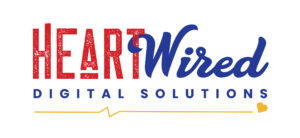Intellectual property is a hot topic, especially for web designers and other creative professionals. Clients want to own their ‘product’. Web designers create the design with assumed copyright when published. For some clients, they may want a different level of protection. Clients have filed to obtain a copyright, submit patents, trademarks, or other protections.
We have compiled an overview of some of the ways you can protect your intellectual property online. As creatives, we do our best to protect the integrity of what we design, even with that there are limitations. There are also attorneys that will be happy to help if you need further guidance.
Web Designers that use “open source” platforms such as WordPress, while there is assumed copyright protecting the design and code. It is understood that the code and design can be essentially copied and used elsewhere, hence the term “open source.”
Open source is a term that originally referred to open source software (OSS). Open-source software is code that is designed to be publicly accessible—anyone can see, modify, and distribute the code as they see fit. ~ Red Hat
What is a Copyright?
Copyrights are stated protections that are granted to the original authors of certain types of work, generally for a limited amount on time. As web designers, there is assumed copyright that protects the intellectual property upon publishing. According to the Government, “Under the copyright law, the creator of the original expression in a work is its author. The author is also the owner of copyright unless there is a written agreement by which the author assigns the copyright to another person or entity, such as a publisher. In cases of works made for hire, the employer or commissioning party is considered to be the author.”
What about Patents?
Patents generally protect inventions. While you might be working with a client that has a patent. Usually, web developers themselves would not be inventing anything. Yet, if you do or are involved in a project that is, you want to be sure that the patent that is filed, which lasts for twenty years is truly of your client’s or your own invention. Keep in mind that only the invention itself gets a patent not the idea of one.
How do Trademarks Differ?
Trademarks serve one main purpose and that is to protect your ‘brand’ from being stolen. This could include things like your logo, name, and other features associated such as taglines, packaging, even custom fonts or designs. If you intend to file for a trademark, we recommend that you do so in the early stages. That way you have the protection before you get noticed and someone else has the opportunity to use it before filing.
So What Do These Have to do with Intellectual Property?
It is important that a business, nonprofit, or even an entrepreneur with an idea, protects themselves early on. While we would like to think that people are not malicious. We need to make sure to look after ourselves before someone steals our work out from under us. Understanding the differences in the protections available will help defend you against it from being stolen. It also provides what action you can take if it is.
Whether you decide to protect your intellectual property is your choice. The content itself, when published, is protected by assumed copyright. A filed copyright gives an extra level of protection and the legal rights to take action if it is stolen.
If you are a web designer, you can avoid problems by using only content that is either completely original, verifiably in the public domain, or for which you have the signed consent of the owner.~ AIGA
While intellectual property laws are only valid in the country of origin. There are many treaties and trade agreements that provide international protection as well. The items mentioned in this post are the common laws that come into play when it comes to designing a website. There are other intellectual property laws and guidelines besides the ones mentioned here. Laws that protect other creatives such as authors, artists, photographers, and more.
As a web designer or developer, it is best to have a broad knowledge of intellectual property laws. Many times the level of protection you provide determines the amount of knowledge you have. Having basic knowledge to direct them to the correct resources will be enough. Keep in mind when setting expectations, we are creatives, not lawyers. At the end of the day, it is the client’s prerogative to which they want to pursue.

